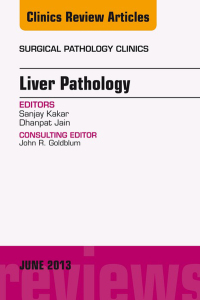-69%
Pathophysiology of Disease: A Comprehensive Guide
The intricate pathophysiology underlying various diseases forms the cornerstone of medical practice. To effectively diagnose and manage these conditions, a thorough understanding of the disease mechanisms is paramount. This article delves into the complexities of pathophysiology, empowering healthcare professionals with the knowledge to tackle clinical challenges with precision.
Pathophysiology: A Deeper Dive
Pathophysiology encompasses the study of the physiological alterations that occur within an organism in response to disease. It explores how normal cellular and organ functions are compromised, leading to the manifestation of clinical symptoms. By unraveling the molecular and cellular events underlying diseases, pathophysiology provides a roadmap for developing targeted therapeutic interventions.
Case-Based Approach to Pathophysiology
Case-based studies offer a highly effective approach to understanding pathophysiology. By examining real-world clinical scenarios, students and practitioners can bridge the gap between theoretical knowledge and practical application. This approach fosters critical thinking, enhances problem-solving abilities, and cultivates a deep understanding of disease processes.
Essential Components of Pathophysiology
-
Etiology: Identifying the underlying cause of a disease is crucial for developing appropriate management strategies. Etiology encompasses factors ranging from genetic predispositions to environmental triggers and infectious agents.
-
Pathogenesis: This stage involves understanding the sequential events that occur after the initial insult. It elucidates the mechanisms by which the disease progresses and ultimately manifests as clinical symptoms.
-
Morphological Changes: Pathophysiology encompasses the study of cellular and tissue changes associated with disease. These alterations can be microscopic, macroscopic, or even evident to the naked eye.
-
Functional Consequences: The understanding of pathophysiology extends beyond morphological changes to encompass the functional impact of disease. This includes both localized impairments and systemic effects that compromise overall bodily functions.
Clinical Applications of Pathophysiology
Pathophysiology plays a pivotal role in clinical practice:
-
Diagnosis: Accurate diagnosis relies heavily on understanding the pathophysiological mechanisms underlying a given disease. By identifying the characteristic features and progression patterns, clinicians can narrow down the list of potential diagnoses.
-
Prognosis: Pathophysiology helps predict the likely course of a disease, enabling clinicians to provide informed prognoses. This information is vital for patient counseling, treatment planning, and resource allocation.
-
Treatment: Understanding pathophysiology guides the selection of appropriate treatments. By targeting specific mechanisms in the disease process, therapies can effectively mitigate symptoms, prevent complications, and enhance recovery.
Conclusion
Pathophysiology is the foundation upon which clinical medicine is built. By unraveling the physiological alterations that occur in disease, we gain invaluable insights into the mechanisms of illness. This knowledge empowers healthcare professionals with the tools to diagnose, manage, and ultimately prevent a wide range of conditions, ensuring optimal patient outcomes.
maybe you like these too:
- Aging: Facts and Theories (Interdisciplinary Topics in Gerontology, Vol. 39)
- Pathophysiology of Disease: An Introduction to Clinical Medicine Flash Cards (EPUB)
- OHIO ACEP Emergency Medicine Board Review (5 day) and EM Review RedefinED (2 day) Courses Resident Combo 2020 (Videos)
- Modern Imaging Evaluation of the Brain, Body and Spine, An Issue of Magnetic Resonance Imaging Clinics (The Clinics: Radiology) (Original PDF from Publisher)










Reviews
Clear filtersThere are no reviews yet.